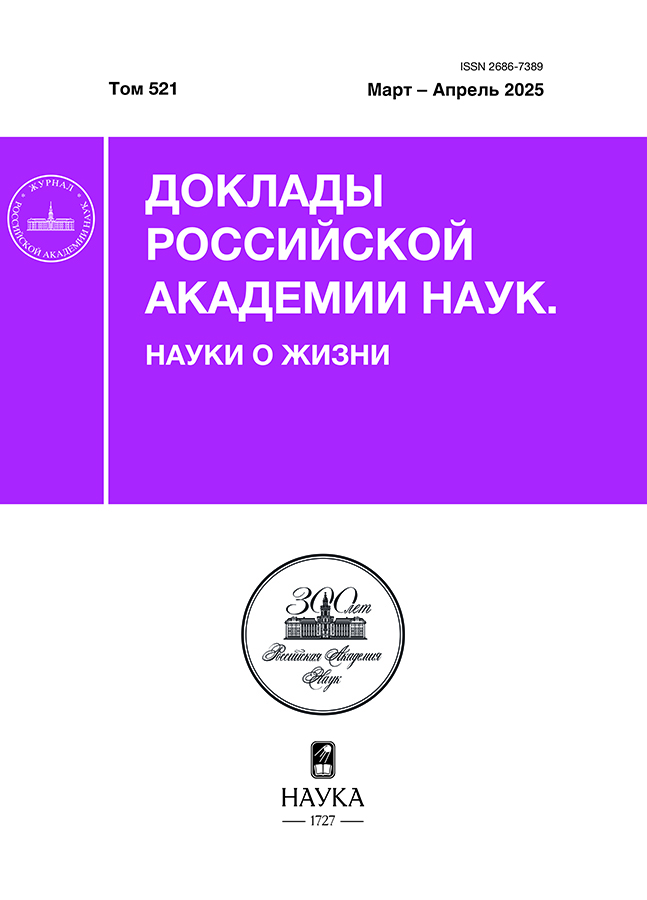Modular nanotransporters containing Keap1 monobodies are capable of reducing the toxic effect of acetaminophen on the liver of mice
- Autores: Khramtsov Y.V.1, Rosenkranz A.A.1,2, Ulasov A.V.1, Slastnikova T.А.1, Lupanova T.N.1, Alieva R.T.1, Georgiev G.P.1, Sobolev A.S.1,2
-
Afiliações:
- Institute of Gene Biology, RAS
- Lomonosov Moscow State University Moscow
- Edição: Volume 521, Nº 1 (2025)
- Páginas: 225-228
- Seção: Articles
- URL: https://kld-journal.fedlab.ru/2686-7389/article/view/684012
- DOI: https://doi.org/10.31857/S2686738925020109
- ID: 684012
Citar
Texto integral
Resumo
Previously, we created a modular nanotransporter (MNT) containing a monobody to Keap1, an intracellular protein inhibitor of the Nrf2 transcription factor that controls cellular protection from oxidative stress and is capable of interacting with Keap1 in hepatocytes and protect this cells from the effects of hydrogen peroxide. Oxidative liver damage by acetaminophen was used as a model to study the antitoxic effect of this MNT. Intraperitoneal injection of acetaminophen to mice resulted in an increase in the level of alanine aminotransferase and aspartate aminotransferase in the blood, as well as in liver edema. A significant decrease in the level of these enzymes in the blood, along with a decrease in liver edema, was observed after preliminary intravenous administration of MNT 2 hours before the acetaminophen injection. The results obtained can serve as a basis for creating drugs aimed at treating diseases associated with oxidative stress.
Palavras-chave
Texto integral
Sobre autores
Y. Khramtsov
Institute of Gene Biology, RAS
Autor responsável pela correspondência
Email: alsobolev@yandex.ru
Rússia, Moscow
A. Rosenkranz
Institute of Gene Biology, RAS; Lomonosov Moscow State University Moscow
Email: alsobolev@yandex.ru
Rússia, Moscow; Moscow
A. Ulasov
Institute of Gene Biology, RAS
Email: alsobolev@yandex.ru
Rússia, Moscow
T. Slastnikova
Institute of Gene Biology, RAS
Email: alsobolev@yandex.ru
Rússia, Moscow
T. Lupanova
Institute of Gene Biology, RAS
Email: alsobolev@yandex.ru
Rússia, Moscow
R. Alieva
Institute of Gene Biology, RAS
Email: alsobolev@yandex.ru
Rússia, Moscow
G. Georgiev
Institute of Gene Biology, RAS
Email: alsobolev@yandex.ru
Academician of the RAS
Rússia, MoscowA. Sobolev
Institute of Gene Biology, RAS; Lomonosov Moscow State University Moscow
Email: alsobolev@yandex.ru
Rússia, Moscow; Moscow
Bibliografia
- Bellezza I., Giambanco I., Minelli A., et al. // Acta Mol. Cell Res. 2018. V. 1865(5). P. 721–733.
- Hayes J.D., Dinkova-Kostova A.T. // Trends Biochem. Sci. 2014. V. 39(4). P. 199–218.
- Ulasov A.V., Rosenkranz A.A., Georgiev G.P., et al. // Life Sci. 2022. V. 291. 120111.
- Robledinos-Anton N., Fernandez-Gines R., Manda G., et al. // Oxid. Med. Cell Longev. 2019. V. 2019. 9372182.
- Ngo V., Duennwald M.L. // Antioxidants. (Basel). 2022. V. 11(12).
- Taguchi K., Kensler T.W. // Arch. Pharm. Res. 2020. V. 43(3). P. 337–349.
- Patra U., Mukhopadhyay U., Sarkar R., et al. // Antivir. Res. 2019. V. 161. P. 53–62.
- Olagnier D., Farahani E., Thyrsted J., et al. // Nat. Commun. 2020. V. 11. 4938.
- Khramtsov Y.V., Ulasov A.V., Slastnikova T.A., et al. // Pharmaceutics. 2023. V. 15. 2687.
- Khramtsov Y.V., Ulasov A.V., Rosenkranz A.A., et al. // Pharmaceutics. 2024. V. 16. 1345.
- Lee W.M. // Hepatol. 2017. V. 67. P. 1324–1331.
- McGill M.R., Williams C.D., Xie Y., et al. // Toxicol. Appl. Pharmacol. 2012. V. 264. P. 387–394.
- Vorobyeva A., Bragina O., Altai M., et al. // Contrast. Media Mol. Imaging. 2018. V. 2018. 6930425.
- Steffens M. G., Kranenborg M.H., O.C. Boerman O.C., et al. // Cancer Biother. Radiopharm. 1998. V. 13. P. 133–139.
- Ferris T., Carroll L., Jenner S., et al. // J. Labelled Comp Radiopharm. 2021. V. 64. P. 92–108.
- Bruinstroop E., van der Spek A.H., Boelen A. // Eur. Thyroid J. 2023. V. 12. e220211.
- Dohan O., De la Vieja A., Paroder V., et al. // Endocr. Rev. 2003. V. 24. P. 48–77.
- Shen Z., Wang Y., Su Z., et al. // Chem. Biol. Interact. 2018. V. 282. P. 22–28.
Arquivos suplementares












